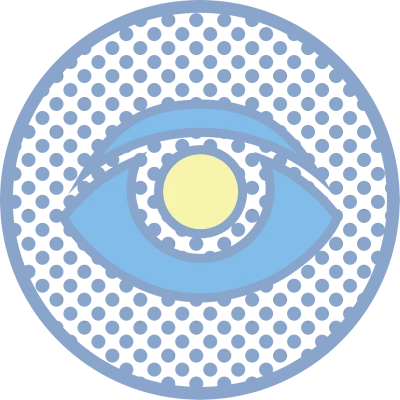What is Pterygium (Surfer’s Eye)?
Pterygium, commonly known as Surfer’s Eye, is a non-cancerous growth of tissue on the white part of the eye (conjunctiva) that can extend onto the cornea. It often develops in individuals frequently exposed to UV rays, wind, and dust—hence the name “Surfer’s Eye.” This condition can cause discomfort, vision disturbances, and, in severe cases, interfere with eyesight.
Although pterygium is not life-threatening, it can be progressive, requiring medical intervention in some cases. Early detection and management can prevent complications, making awareness essential for individuals at risk.
Symptoms of Pterygium (Surfer’s Eye)
Pterygium symptoms vary depending on its size, growth rate, and location. Common signs include:
-
Foreign Body Sensation
A persistent feeling of something stuck in the eye is common, leading to discomfort, excessive blinking, or rubbing.
-
Tearing from the Eyes
Excessive tearing, also called epiphora, occurs as the eye tries to remove irritation caused by the growth.
-
Dryness of the Eyes
Pterygium disrupts the normal tear film, leading to chronic dry eyes, discomfort, and irritation.
-
Redness
Due to inflammation, the affected eye often appears red and irritated, especially after exposure to wind or sunlight.
-
Blurred Vision
As the pterygium extends onto the cornea, it can distort vision, leading to blurred or obstructed eyesight.
-
Eye Irritation
A growing pterygium can cause itching, burning, and overall discomfort, especially in dry or dusty environments.

Causes of Pterygium (Surfer’s Eye)
Pterygium is strongly linked to environmental factors, especially exposure to UV rays, wind, and dust. Other contributing factors include:
-
UV Exposure (Biggest Risk Factor)
Prolonged exposure to ultraviolet (UV) radiation from the sun is the primary cause of pterygium. This explains why it is commonly seen in surfers, fishermen, and outdoor workers.
-
Chronic Eye Irritation
Frequent exposure to dry, dusty, or smoky environments increases irritation, making individuals more susceptible to pterygium.
-
Wind and Sand Exposure
High-wind environments, especially in coastal areas, can lead to increased evaporation of tears, making the eyes dry and prone to irritation.
-
Genetic Factors
Studies suggest that genetics may play a role in pterygium development, with some individuals being more prone to the condition.
-
Contact Lens Use & Eye Strain
Excessive contact lens wear or digital eye strain may contribute to discomfort and increase the risk of pterygium self-care negligence.
Types of Pterygium (Surfer’s Eye)
There are different grades of pterygium based on severity:
-
Grade 1: Small growth without affecting vision
-
Grade 2: Larger growth but no major vision obstruction
-
Grade 3: Pterygium extends over the cornea, causing mild vision impairment
-
Grade 4: Severe obstruction, leading to blurred vision and astigmatism
What’s the Difference Between Pterygium and Pinguecula?
Many confuse pterygium with pinguecula, but they are different conditions:
| Feature | Pterygium | Pinguecula |
| Growth Type | Fibrovascular tissue growth | Yellowish deposit on conjunctiva |
| Location | Grows onto cornea |
Stays on conjunctiva only |
| Cause |
UV exposure, dust, wind |
Aging, environmental factors |
| Symptoms | Redness, irritation, vision changes | Dryness, mild irritation |
| Treatment | Eye drops, surgery (severe cases) | Lubrication, UV protection |
Best Treatment Options for Pterygium (Surfer’s Eye)
1. Conservative Management (Self-Care)
For mild cases, treatment involves:
- Lubricating eye drops for dryness relief
- Anti-inflammatory drops to reduce redness and irritation
- UV-blocking sunglasses to prevent further damage
2. The Best Eye Drop for Pterygium
Some of the best-recommended eye drops for pterygium include:
- Artificial tears (for dryness relief)
- Steroid eye drops (for inflammation)
- Lubricating gel-based drops (for overnight hydration)
3. Surgical Removal (For Advanced Cases)
In cases where the pterygium affects vision, surgical removal is recommended. The procedure involves excising the growth and using a conjunctival autograft to prevent recurrence.
Prevention Tips: How to Reduce the Risk of Pterygium?
-
Wear UV-Protective Sunglasses – Reduces UV exposure
-
Use Lubricating Eye Drops – Prevents dryness and irritation
-
Limit Outdoor Exposure – Avoid peak sun hours (10 a.m. – 4 p.m.)
-
Wear Hats & Protective Eyewear – Acts as an extra barrier
-
Stay Hydrated – Keeps eyes moist and reduces irritation
By following these pterygium self-care tips, you can minimize the risk of developing this eye condition.
Tests for Diagnosing Pterygium (Surfer’s Eye)
Early detection of pterygium (Surfer’s Eye) is crucial in managing the condition effectively. Eye specialists use several diagnostic tests to assess the growth, impact, and severity of the condition. Here are the primary tests used for diagnosing pterygium:
1. Slit Lamp Examination
A slit lamp examination is one of the most common tests used to detect pterygium. It allows ophthalmologists to examine the eye’s surface, cornea, and conjunctiva under high magnification and illumination. This test helps assess inflammation, vascular growth, and potential corneal involvement.
2. Visual Acuity Test
A visual acuity test determines how well a person can read letters on an eye chart. As pterygium progresses, it may affect vision clarity by altering the shape of the cornea, causing astigmatism or leading to a foreign body sensation in the eye.
3. Corneal Topography
Corneal topography is an advanced imaging technique that maps the curvature of the cornea. Since pterygium can cause corneal distortion, this test helps identify irregularities and assess how the growth impacts light refraction and vision quality.
4. Photo Documentation
To track the progression of pterygium over time, doctors use photo documentation. This involves taking detailed images of the eye at different intervals to measure growth, monitor changes, and determine if surgical intervention is necessary.
Complications of Pterygium (Surfer’s Eye)
Although pterygium is typically a benign eye condition, complications can arise if the growth progresses unchecked. Here are some potential complications:
1. Chances of Infection
Pterygium increases the risk of eye infections, especially if the surface of the conjunctiva becomes irritated or inflamed. If left untreated, infections can lead to pain, discharge, and further damage to the cornea.
2. Corneal Scarring
A growing pterygium can extend into the cornea, leading to scarring. This scarring can result in permanent vision impairment, as it distorts the natural shape of the cornea and causes blurry vision.
3. Retinal Detachment (Rarely)
Though rare, severe cases of pterygium can contribute to retinal detachment due to chronic inflammation and ocular surface instability. This is a serious condition that can lead to vision loss if not treated promptly.
4. Conjunctival Graft Dehiscence
In cases where a pterygium surgery (conjunctival autograft) is performed, there is a possibility of graft dehiscence, meaning the transplanted tissue fails to adhere properly, requiring further intervention.
5. Diplopia (Double Vision)
When pterygium grows aggressively, it can cause diplopia (double vision) due to its effect on corneal curvature and visual alignment. This can severely impact daily activities such as reading, driving, and working on screens.
Treatment for Pterygium Eye
1. Medical Treatment
Mild cases of pterygium can be managed with non-surgical treatments, including:
- Lubricating eye drops (Artificial tears) to reduce dryness and irritation
- Anti-inflammatory eye drops to control redness and swelling
- UV protection (sunglasses and hats) to slow progression
- Lifestyle modifications, such as reducing dust and sun exposure, can also help prevent worsening symptoms.
2. Surgical Treatment
For advanced cases where pterygium obstructs vision or causes severe discomfort, surgical removal is required. The surgical procedure involves:
- Excision of the pterygium to remove the growth
- Conjunctival autograft transplantation, where tissue from another part of the eye is placed over the affected area to prevent recurrence
- Amniotic membrane transplantation in severe cases to promote healing and reduce scarring
Post-surgery, regular follow-ups and UV protection are essential to prevent recurrence.
Frequently Asked Questions (FAQs) about Pterygium or Surfers Eye
What is the best eye drop for pterygium?
The best eye drops for pterygium include artificial tears, anti-inflammatory drops, and lubricating gels to soothe dryness and irritation.
Why is pterygium common on the nasal side?
Pterygium commonly develops on the nasal side because this area receives more UV light reflection from surfaces like water and sand.
What happens during a pterygium surgery?
When it comes to medical treatments and surgeries, it is best to get in touch with a prestigious eye hospital to avail services with best-in-class technology and infrastructure. The process of pterygium surgery is low-risk and fairly quick; therefore, there is nothing to worry about. Below we have mentioned the steps taken during the surgery:
- First, the surgeon sedates the patient to numb the eye that needs to be operated so that no amount of discomfort is caused during the surgery. In addition, they will also clean and wipe the surrounding area to reduce the risk of infections.
- In the next step, the surgeon will carefully remove the conjunctiva tissue along with the pterygium.
- Once the pterygium is successfully removed, the surgeon with replace it with a graft of membrane tissue in order to prevent pterygium growth in the future.
What is the ‘Bare Sclera Technique’?
Another way of treating pterygium is by the bare sclera technique. In simple terms, it is a traditional procedure where the surgeon removes the pterygium tissue and does not replace it with a new tissue graft.
In comparison with pterygium surgery, the only point of difference is that the bare sclera technique leaves the white of the eye exposed to heal and recover on its own. However, on the other hand, this technique eliminates the risk of fibrin glue but increases the risk of pterygium regrowth.
What are the complications of pterygium surgery?
In the medical sector, there are risks in every surgical procedure. In a pterygium surgery, it is normal to experience some redness and discomfort with some blurriness during the recovery period. However, if the patient begins to develop difficulties in vision, pterygium regrowth, or total vision loss, schedule an appointment with your ophthalmologist at the earliest.
What is the difference between in glue and sutures?
After the pterygium is successfully removed, the concerned surgeon will either use fibrin or sutures to optimally secure the conjunctiva tissue graft in its proper place. Both these techniques and options are used to reduce the possibility of pterygium regrowth. Now, let’s address the point of differences between both.
In surgical processes, using dissolvable sutures is often considered a benchmark practice. However, there is a high chance that it can cause more discomfort in the post-surgery or recovery time, with stretches the healing process for several days.
Alternatively, in the case of fibrin, glues drastically reduce discomfort and inflammation while reducing the recovery time by less than half in comparison with sutures. But it is imperative to keep in mind that since this glue is a blood-derived medical product, it carries the risk of transmitting diseases and viral infection. In addition, using fibrin glue can prove to be a more expensive option.
What happens after the pterygium surgery?
By the end of the surgical process, the surgeon will apply an eye pad or patch to prevent the breakout of any infection while ensuring that the patient gets optimum comfort in the recovery period. The patient will be advised to not touch or rub their eyes after the surgery to avoid the dislocation of the newly attached tissue.
Secondly, the patient will be given a list of aftercare instructions like antibiotics, cleaning procedures and scheduling regular follow up visits. After pterygium surgery, the normal bracket of the recovery time is between a couple of weeks to one or two months.
Within this period, the operated eye gets enough time to heal without any signs of discomfort and redness. However, this heavily depends on the type of technique or treatment that is used during the pterygium surgery.

Do not ignore eye trouble!
Now you can reach our senior doctors by booking an online video consultation or a hospital appointment
Book an appointment now